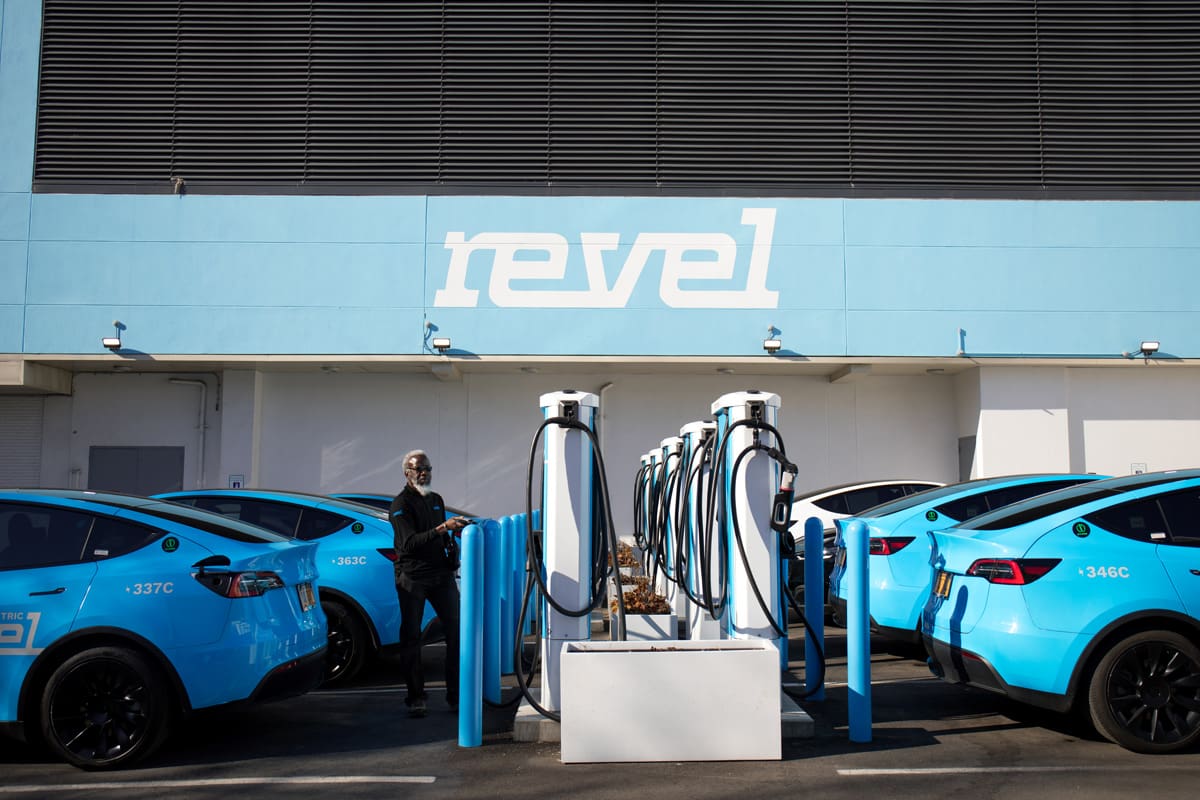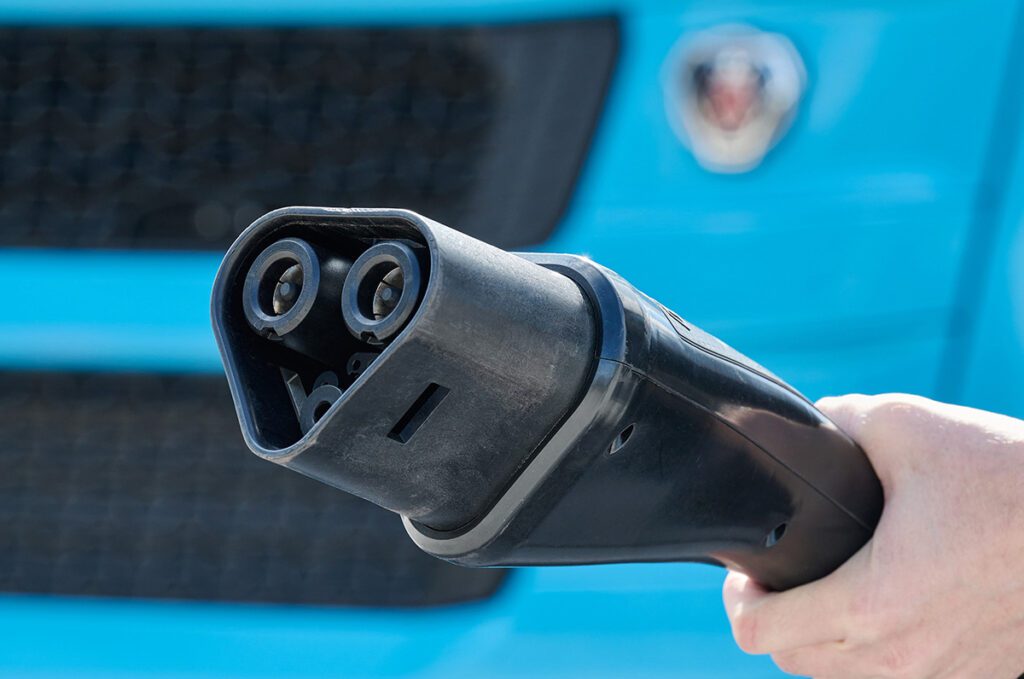Amid the giddy rush to adopt Tesla’s NACS charging system, a few voices in the wilderness can be heard crying, “But what about bidirectional charging?”
Many see bidirectional charging, which enables V2G and related technologies, as a necessary part of the future EV ecosystem (California may soon mandate the capability for all new EVs). Vehicle-to-home, which allows EV owners to use their cars as a source of backup power, appears to be highly popular with prospective buyers, and vehicle-to-grid could turn EVs into a valuable resource for utilities, and a source of revenue for fleet operators (and better yet, it could silence the anti-EV trolls’ claims that EVs will “crash the grid”).
However, Tesla’s system doesn’t currently support bidirectional charging, and the company has never shown much interest in the technology.
New York-based Revel, which cleverly exploits the synergy between rideshare EVs and public fast charging hubs, operates what it calls “the first vehicle-to-grid program on NYC’s grid.” (See the feature article in our January-March 2023 issue.)
The company recently issued a statement calling for automakers—whatever charging system they adopt—to add V2G capabilities to their EVs.
“All of Revel’s public fast charging sites have always and will continue to offer both CCS and NACS connections,” says Revel. “We support plug standardization because it will open up the full market of EV infrastructure—which today is sparse especially in dense urban areas—to more consumers, helping ease the transition to electric.
“As EV adoption grows, however, we’ll need to ensure our sector supports grid reliability and resiliency. Vehicle-to-grid technology makes EVs an asset to the grid, not a liability. We urge the EV industry to fast-track V2G research and development for both CCS and NACS fast charging, and for automakers to enable V2G capabilities on all future electric vehicle models.”
Source: Revel











































































































